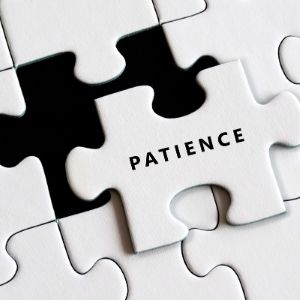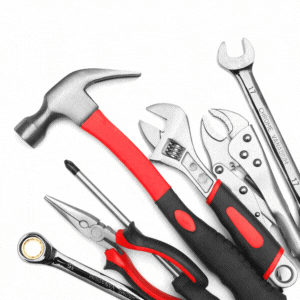
No one grows as a leader without the support and mentorship of others. That’s why effective sales coaching is critical to managers and representatives.
With few exceptions, almost every top performer in every field started out with little-to-no skills in their chosen field.
Once upon a time, every pitcher struggled to throw a strike, every singer struggled to hold a tune, and every sales development rep (SDR) despaired of ever making a sale.
Although every high achiever can thank some amount of natural aptitude, genuinely successful performers owe their achievements to good coaches and managers.
Are you learning how to mentor new sales reps and manage tenured sales reps to help your team achieve long-term success?
Read on and find some sales coaching tips that will help you along the way.
What Is Sales Coaching?
Sales coaching is the process of developing and accelerating a rep’s performance by incorporating behavioral changes.
This practice focuses on helping a rep or manager take their knowledge, experience, and ability to the next level by finding the best ways to enhance that person’s skill, wisdom, and talent.
It’s clear that sales coaching is a must-have activity in any organization’s arsenal.
The purpose of sales coaching is to maximize sales teams’ performance by leveraging tools, messaging, training, and overall attitudes. Stats say that sales reps who receive less than 30 minutes of individual coaching every week experience lower quota attainment.
So, how can you tell if sales coaching is necessary for your team?
The harsh reality is that more than half of B2B executives believe their employees don’t understand their company’s strategy. This is one of the main reasons sales coaching is so important – it allows leaders to define business goals, outline workflow, and work one-on-one with reps to achieve stellar results.
Successful sales coaching encourages a collaborative environment with mutual trust and respect, which focuses on the need to increase rep retention within an organization.
- 1. Establish Expectations
- 2. Set Attainable Goals
- 3. Create an Open-Door Policy Environment
- 4. Use Data Visuals
- 5. Be Patient and Consistent
- 6. Conduct Comprehensive Onboarding
- 7. Recognize That Each SDR Is Different
- 8. Be Specific and Constructive
- 9. Provide Necessary Resources and Tools
- 10. Don’t Put Your SDRs on the Phone Right After Training
- 11. Don’t End Training Once Your New Reps Have Settled In
- Final Thoughts
Let’s outline the path to effective sales coaching:
1. Establish Expectations
It’s the age-old question, ‘what are you hoping to accomplish within [insert time frame]?’
This also lays the foundation for creating coaching initiatives with you and your reps. When you can set up clear and simple goals, you create an inviting and transparent environment.
Your reps may struggle to achieve objectives and goals if you haven’t communicated clear expectations. Present a well-developed vision for your team’s performance so that each member understands what they need to do to succeed.
Begin with a well-defined sales process.
A clearly defined process — delineated in writing, reinforced through training, and facilitated by sales engagement technology — is one of the hallmarks of an elite sales team. Teams with a clear process enjoy a 55% success rate of closing compared to a 40% close rate for those that don’t.
When you provide a process for your reps to follow and technology to support them, you can streamline the sales process to help each representative be more productive.
2. Set Attainable Goals
A study from Harvard University discovered that students who followed a goal-oriented plan performed 30% better than those who didn’t.
Your new SDRs may not be in school, but they are learning. Instead of shouldering them with an intimidating quarterly quota, Lori Richardson, Founder of Score More Sales, recommends small goals.

It could be to close the first deal, make a certain number of calls, etc. Anything that creates a sense of achievement when attained.
Key performance indicators, or KPIs, are another vital aspect of your training process.
KPIs give your team concrete measurables they can reference to evaluate their own performance. KPIs also provide you with a baseline for performance reviews and help you identify areas of improvement for your team members.
Also, give your reps real-time reports and dashboards to track their performance; this will allow your team members to know where they stand at all times.
Neglecting to let your new hires know what you expect from them will be a pitfall to their success.
Clearly outlining realistic goals and quotas, they need to meet will help with productivity. It will also make it easy to figure out who requires more coaching in the future.
To increase employee retention, you can take it a step further and provide a roadmap for your company’s career growth. By letting your new inside sales rep know the basis for promotions and raises, they’ll visualize their next step with you.
3. Create an Open-Door Policy Environment
Good sales coaching means you are caring and engaging – you motivate and mentor reps in a timely manner because your peers trust you.
Reps shouldn’t be afraid to ask questions and speak with you. When you meet with your sales team, ask open-ended questions to keep conversations lively.
Then, actively listen to what your reps have to say.
Finally, offer guidance and advice after each talk.
Examples of open-ended questions include:
- What did the lead say?
- How did the conversation go? What could’ve gone better?
- What steps would you take next?
However, it’s a mistake to talk to your sales reps only during your regular sales meetings.
Interact with new hires daily so that they feel welcome and part of the team. Consider having lunch with them and take the opportunity to ask for feedback on their training.
You’ll make a connection with your new employee and possibly gain some valuable intel that could benefit your training program.
Being a good inside sales coach isn’t just about the ramp-up period. It’s about having ongoing conversations to seek new teaching opportunities.
Finally, make sure to listen to your sales reps’ concerns. Training and feedback isn’t a one-way street.
Your team members will likely have concerns and suggestions.
Set aside some time for your reps to speak to you whenever they have feedback or need your assistance, whether one-on-one or in regularly scheduled weekly meetings.
4. Use Data Visuals
The industry has seen a recent surge in data visuals and can be a great sales coaching technique.
When you have a clear understanding of showing your team sales goals outlined or reach, you will be able to set a standard for achieving success. The best training methods have visual elements that show you can measure and repeat results – the numbers should drive sales training.
You can use dashboards to visualize trends and see rep activity. Collect and analyze this data so you can see new opportunities for coaching and improvement.
5. Be Patient and Consistent
There’s no set prescription for how to succeed in sales.
It’s a constant learning process. According to HubSpot, high-performing sales organizations are twice as likely to provide ongoing training as low-performing ones.
Surprisingly, the average company only spends $2,326 a year in sales training compared to the average cost-per-hire, which is $4,425. Is it time to reevaluate budget allocation and place the focus on enabling your team with knowledge?

Change takes time and there are not nearly enough hours in the day for reps to pick up new skills and change their behavior.
A one-time meetup/session won’t cut it, given that 87% of training content is forgotten within weeks.
You should set up weekly, bi-weekly or monthly coaching – depending on the individual rep’s opportunity – to keep up with the momentum of the one-on-one relationship you’re constantly trying to shape.
6. Conduct Comprehensive Onboarding
SDRs’ success begins with their first day on the job. A streamlined and effective onboarding process gives new reps a firm foundation to start their position on your team.
As a sales leader, you have insights into your business that you can’t expect a new sales rep to know.
What are the common objections?
What wording should they use on a call?
When is the best time to call?
You should cover all items during your onboarding process and automate through a sales engagement solution.
Brainshark reported that about 60% of sales reps don’t fully ramp up until they’re in the position for a minimum of seven months, and 20% take a year.
Guidance, playbooks, and other forms of direction are helpful, but Lori Richardson says that “there’s a certain amount of learning that just happens as you go along, and I think patience is what’s really important.”
So, the onboarding phase for new inside sales employees should not be solely self-guided from a book. Remember that the time invested in each new employee will improve their likelihood of success and benefit the organization.
When onboarding new reps, you need to touch on critical aspects of their jobs, from technical training on how to use your sales engagement software to a thorough introduction to the products and services your company sells.
You’ll also want to cover basic sales skills, such as rapport building, uncovering pain points, and overcoming common objections.
However, sales coaching doesn’t end after your new hires find their footing.
Continuous training helps your team stay on top of their game and master new skills. Salesmanship is a skill, just like any other skill, and training and practice are sure ways to improve your rising all-stars.
When training your more experienced future all-star reps, keep in mind what they already know.
Don’t focus on basic salesmanship skills; instead, work on product knowledge, fine-tuning their approaches, and other nuanced skills that can pay enormous dividends in the long run.
If your new hire is proficient in sales but new to your industry, you must include industry-specific training. Instruction provided should consist of demonstrations of the product to get a clear understanding and answer any questions.
Any company-specific expectations regarding communications with prospects or clients should be made clear in training too.
Teaching your new inside sales reps the proper language and tone of your company’s voice, along with how to use your inside sales software, will save a significant amount of time down the road.
If they’re computer savvy, they may be able to figure it out, but time won’t be wasted with the proper instruction. What seems normal or natural to you could be a brand new way of thinking to your employee.
7. Recognize That Each SDR Is Different
Each of your SDRs brings their own set of unique skills to work every day.
Use those differences to bring out each rep’s full potential instead of trying to force everyone into the same mold.
For example, one rep may be an exceptional listener.
Give that SDR training to complement her listening ability, such as using pointed questions to identify customer pain points. This new skill can help them to capitalize on her listening talent.
Another rep may be exceptionally gifted when it comes to building rapport. Training reps in the art of objection prevention and handling can make his rapport-building skills even more powerful.
Companies with sales training programs that exceed employee expectations experience:
- A 3% increase in sales reps hitting quota when compared to companies whose sales training programs just met expectations
- An 8% increase in sales reps hitting quota when compared to companies whose training programs need improvement.
In addition to the individual differences between reps, you’ll also have to contend with generational differences. In a broad sense, each generation has its own preferred learning style.
- Baby boomers and older workers benefit from formal settings, printed materials and face-to-face interaction with a trainer.
- Younger workers, including Generation X and millennials, are fond of online materials, self-study opportunities, practical learning, and role-playing activities.
- Generation Z workers, who will be entering the workforce soon, value collaboration and peer-directed activities. These workers quickly pick up on software skills and other demanding tasks, but they may need extra training on the basics like writing emails or calling customers. Growing up in social media and texting, many Generation Z workers are inexperienced with these more traditional tools.
Taking an active role with your team can help you tailor your training to each SDR.
- Role-play with your reps to help them understand your customers better while actively developing their skills.
- Listen to call recordings to identify coaching opportunities.
- Assist new reps by listening in on live calls and jumping in when necessary to assist and demonstrate how to address problem areas.
8. Be Specific and Constructive
Criticism is a necessary element for any sales coaching program, but you need to make sure that your critiques are helpful.
Speaking vaguely, saying something along the lines of “You need to be friendlier on the phone” doesn’t give your reps much guidance. Instead, offer specific feedback and guidelines to help your SDRs address individual problems.
For example, one rep may be so passionate about your products that they habitually speak too fast.
Suggesting that they slow down her delivery could improve their phone skills and build better rapport with prospects.
By offering specific and constructive criticism and suggestions, you’ll give your reps a better understanding of what they need to do to improve their skills.
9. Provide Necessary Resources and Tools
If you’ve noticed that one of your SDRs might benefit from additional training, a sales tool, or other resources, find a way to provide it to the rep.
If you don’t have a training budget that allows for individualized training, take a little one-on-one time to suggest books and outside training for the rep to consider.

Also, encourage your sales team to share their favorite sales books with one another to help feed the desire to learn and improve. Pairing up new reps with experienced mentors can also help the rookies learn the ropes quickly while keeping the mentors sharp.
Create a mentorship/shadowing program or let your new hires know who is an ideal person to look up to in their role. It should be someone happy at the company and hitting their quotas. Your newbie rep will learn a lot from watching how other experienced sales professionals engage with prospects and achieve success.
Also, you need to arm them with a sales engagement solution to help your reps manage customer relationships better. Providing the right resources and tools will set your SDRs up for success.
10. Don’t Put Your SDRs on the Phone Right After Training
Provide some sort of adaptive assessment to ensure they’re ready to be on their own.
An assessment can be in the form of a written test, group presentation, or role-playing.
Following up training with testing is logical and will indicate if training has adequately prepared them for the job.
Wouldn’t you rather know if someone needed more training before they got on the phone and ruined a deal with one of your targeted customers?
On the other hand, you should encourage them not to hesitate when they’re not getting a response on their email, but to pick up the phone and call. They must get over whatever it is that’s holding them back – inexperience, lack of confidence, fear, etc. – making calls is not an option.
In his blog post, Daniel Disney tells a story about how a salesperson taped a note to their phone that said, “Pick me up. I make you money.” Humorous yet encouraging to take action.
He also shares a few tips to overcome the fear of making cold calls that will be useful for your new SDRs.
11. Don’t End Training Once Your New Reps Have Settled In
Even wise employees with seniority can find value from continued sales training.
This could be instruction on sales tactics using social media, on new product features available, or so much more.
Halting education is careless and can leave your inside sales reps trailing the competitors in skill level.
Again, this list of inside sales coaching tips is not comprehensive and was written to serve as a reminder that training new employees is just as important as the efficiency of the software you use.
Learn more about inside sales onboarding in this webinar, Onboarding a World-Class Inside Sales Force, to help improve your process.
Final Thoughts
All-star SDRs aren’t born; they’re created through the individual drive, directed training, and smart management. Providing active training to all of your reps can help your sales team to bring out its full potential.
Remember, no one has all the answers. When starting out in a sales career, everything is new, and it’s hard to know what’s right and what’s wrong. Support your team and the sales profession as a whole by passing on your knowledge and patiently guiding your new SDRs to sales success!



